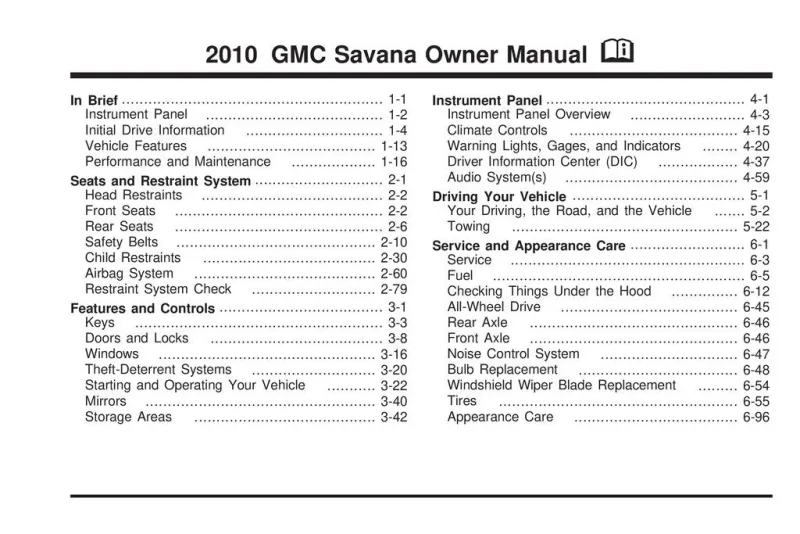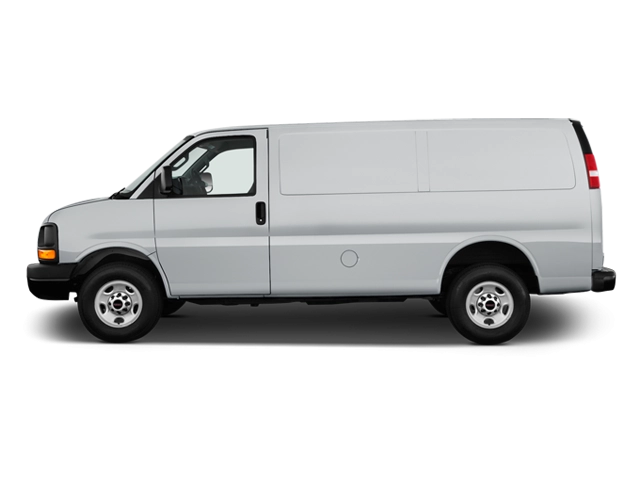2010 GMC Savana Owner's Manual

Table of Contents
2010 GMC Savana Overview
Introduction
The 2010 GMC Savana stands as a robust choice in the full-size van market, delivering versatility and practicality for both personal and commercial use. Known for its strong performance and spacious interior, it caters to families, businesses, and those needing ample cargo space. With a focus on durability and utility, the Savana is constructed to withstand the rigors of daily demands while providing comfort and convenience for its occupants.
Powertrains
The 2010 GMC Savana offers a range of powertrains tailored to varying needs. Buyers can choose between a 4.8-liter V8 engine that produces 280 horsepower or an upgraded 6.0-liter V8 engine delivering a robust 323 horsepower. For those prioritizing fuel efficiency without compromising on performance, a 2.8-liter inline-4 diesel engine option is also available. Each engine is paired with a smooth-shifting 6-speed automatic transmission, ensuring that power is readily accessible whether navigating city streets or cruising on the highway.
Trims
Features
The 2010 GMC Savana is equipped with a host of features focused on enhancing comfort and convenience. Standard amenities include air conditioning, power windows and locks, and a basic audio system. Higher trims offer additional features such as navigation, a premium sound system, and advanced safety features like stability control and rear parking assist, ensuring a smooth and secure driving experience.
Owner's Manual
The owner's manual for the 2010 GMC Savana is an essential resource for any owner, providing detailed information on operation, maintenance, and safety. It covers routine maintenance schedules, specifications, and troubleshooting tips, ensuring that owners can keep their Savana running optimally. Comprehensive guidance on features and technology is also included, ensuring that owners can fully utilize the van’s capabilities over its lifespan.
User manual download
The GMC Savana owner manual for the 2010 model year is to be found in PDF downloadable format on this page. The owner manual for the model year 2010 is free and in English, but the repair manuals are usually not easy to get and may cost more.
Manual Questions
Fill the form below and someone will help you!

